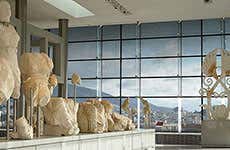
Acropolis of Athens
The Acropolis of Athens, meaning “high point city” in ancient Greek is a rocky hill in the city center, home to numerous temples and other important buildings.
Perched on a hill 156 meters above sea level, the Acropolis of Athens stands as the most iconic and significant archaeological site in Greece. Its elevated position offers commanding views of the entire city, making it visible from almost every neighborhood in Athens.
Throughout its history, the Acropolis has faced numerous episodes of looting and vandalism. However, following Greece's declaration of independence, extensive restoration efforts were undertaken to preserve its surviving ruins.
A visit to the Acropolis offers a glimpse into the grandeur of ancient Greece. As you walk among its ancient structures, you can imagine the splendor of its golden age, when it served as a center of religion, politics, and culture. The site remains a testament to the enduring legacy of Greek civilization.
Parts of the Acropolis
The Acropolis is home to some of the most famous classic Greek monuments including the Parthenon, Erechtheion, Temple of Athena Nike and the Propylaea, all built of white marble.
The monuments on the Acropolis have been damaged numerous times and sacked by various invaders throughout the centuries; however, the ruins were restored after the Greek War of Independence and now give a good idea of how the landmarks were when they were first built in the fifth century BC.
Parthenon
The Parthenon is an enormous temple that dominates the Athenian Acropolis. It is also the most important example of ancient Greek architecture.
Constructed between 447 and 432 BC, the beautiful white marble temple was designed in a Doric style. It was built in honor of Athena, the Greek goddess, and it was home to the colossal sculpture of Athena Parthenos, a 12-meter ivory and gold statue. The only remains of the statue are its replicas.
Propylaea
Erected between 437 and 432 BC, the Propylaea is a mammoth gateway to the Acropolis and its landmarks. This rectangular building has a Doric-column façade and is located at the top of numerous steep steps. The portal with five entrances was once used to control the access to the Acropolis.
Erechtheum
The Erechtheum (Erechtheion), built in 421 and finished in 405 BC, is an Ionic style temple erected on the most sacred area of the Acropolis, where Athena’s sacred olive tree grew.
The highlight of the Erechtheum is on the south side of the temple. The “Porch of the Maidens” is made up of six columns carved in the shape of caryatids (a typical Greek female figure used to decorate the ancient Greek temples). The original sculptures are conserved in the Acropolis Museum.
Temple of Athena Nike
On the southwest of the Acropolis is located The Temple of Athena Nike, the smallest temple of them all. The designation “nike” means victory. It was built in 420 BC to commemorate the victory of the Greeks in the Battle of Salamis against the Persian Empire.
The Ionic style monument housed an image of the Goddess of war without wings. According to the legend, the statue was wingless so that it could not fly away from Athens.
Legendary
Although the Greek peninsula offers countless treasures, the Acropolis of Athens is one of the most important landmarks. A visit to nothing but the Acropolis makes the trip to the capital worthwhile.
The Acropolis is currently under construction until 2020 approximately, so you might need a bit of imagination to get a sense of how the landmarks stood in the fifth century.
If you would like to book a tour of the city and the Acropolis click here.
Tickets
You can buy the ticket to the Acropolis at the following link, which also includes pickup, a guided tour and entrance to the Acropolis Museum.
It is also possible to purchase an entry ticket to the Acropolis without a guide.
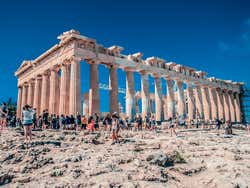
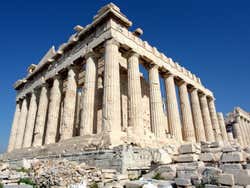
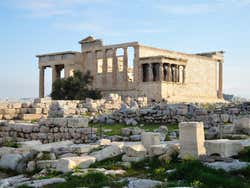
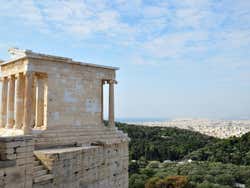
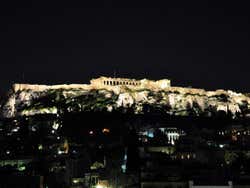
Schedule
1 November to 31 March: From 8 am to 5 pm
1 April to 31 October: From 8 am to 8 pm (every two weeks in September and October, the monument closes 30 minutes early)
Closed: January 1, March 25, May 1, Easter Sunday, December 25 and 26
Price
Adults: € 20 (US$ 23.57)
Youth from 6 to 25 years old outside the EU and over 65 years old: € 10 (US$ 11.78).
Up to 25 years old belonging to the EU and under 5 years old outside the EU: free entrance.
Combined adult ticket: € 30 (US$ 35.36)
Combined ticket up to 25 years from EU: € 15 (US$ 17.68)
*The combined ticket includes: Acropolis, Ancient Agora, Roman Agora, Kerameikos, Temple of Olympian Zeus, Hadrian's Library, the Olympiaeum and the Aristotelian Lyceum.
Free admission: March 6, April 18, May 18, last weekend of September and October 26.
Athens City & Acropolis Guided Tour € 55 (US$ 64.83)
Transport
Metro: Monastiraki, lines 1 and 3; Akropoli, line 2.
Nearby places
Parthenon (31 m) Kanellopoulos Museum (144 m) Anafiotika (150 m) Theatre of Dionysus (178 m) Odeon of Herodes Atticus (226 m)
